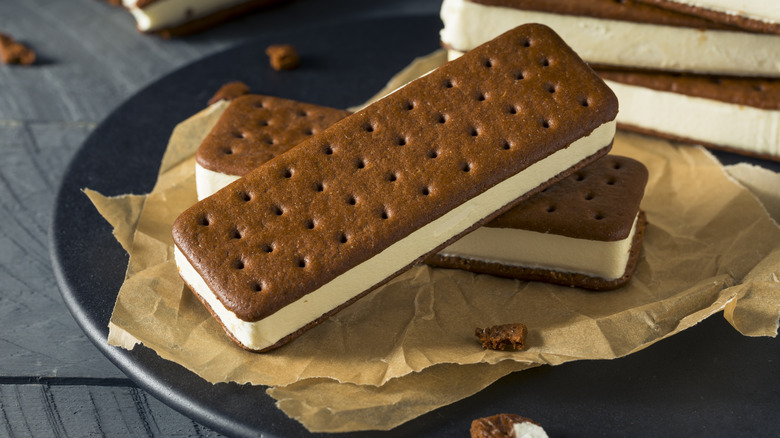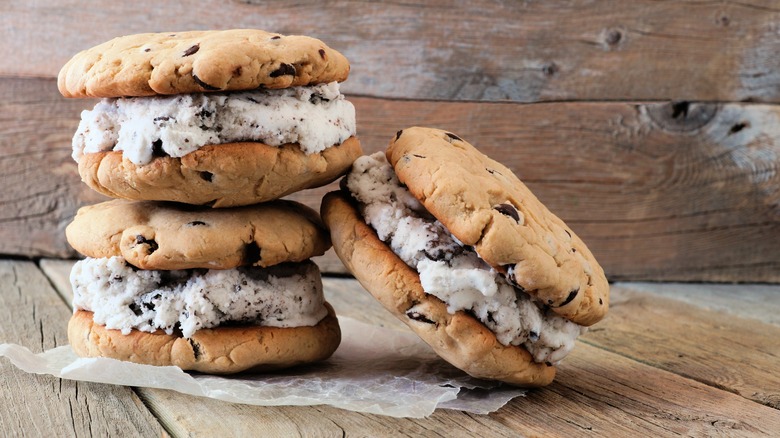The Historic Evolution Of The Ice Cream Sandwich
If one year's supply of America's ice cream sandwiches were lined up end to end, Mobile Cuisine states they would wrap the world more than three times. The treat is American's second favorite ice cream dessert, and an average of 48 of these frozen dairy creations are eaten every second (per South Florida Reporter). But how, exactly, these delights came into existence is a bit less clear.
In the late 1800s, New York City street vendors sold what were known as hokey pokes, which constituted of ice cream pressed between two pieces of paper (via Mental Floss). Jeri Quinzio, the author of Dessert: A Tale of Happy Endings and Of Sugar and Snow: A History of Ice Cream Making, told the Boston Globe these treats, "sold for a penny, and you had to have a penny because they were making them so fast they didn't have time to make change." Hokey Pokes were sweet breaks served to the working class, Mental Floss explains, yet once bankers and financiers sampled it for themselves, restaurants began presenting the cold delicacies on plates, claiming that their versions were superior to anything you could find out on the road.
In time, the hokey pokes' paper was replaced by slices of sponge cake, but these crumbly confections got messy as soon as the ice cream began to melt (per Rochester First). Graham crackers became the next experiment, and the idea of an actual ice cream sandwich began to take hold.
Limitless takes on a traditional treat
In 1928, George Whitney placed ice cream between oatmeal cookies and dipped the entire dessert into melted chocolate (via The Original It's It). Nearly two decades later, Jerry Newberg sold sandwiches of vanilla ice cream and chocolate wafers at baseball games (per News Nation Now). This set the foundation for more delicious creations. Richard LaMotta made the "chipwich" in 1978, which, according to The Original Chipwich, was the first time ice cream found a home between chocolate-chip cookies.
Since then, modifications to the frozen sandwich have spanned the globe. In Vietnam, for example, ice cream is scooped onto pieces of bread and topped with peanuts (via Street Food and Travel). Bastani-e nooni, the Persian ice cream sandwich, places pistachio, rose, and saffron ice cream between vanilla wafers (per Atlas Obscura). BRIT + CO has tracked down all sorts of other modifications: ice cream folded into what looks like small pies and sandwiches made with churros. (For more inspiration, check out our Ice Tea Cream and Choco Taco-Inspired recipes). It's clear the ice cream sandwich train left the station long ago, and there's no telling where it might go next.

